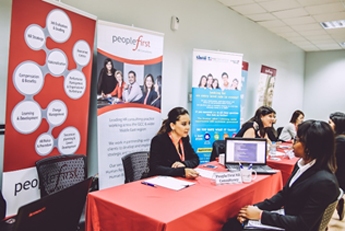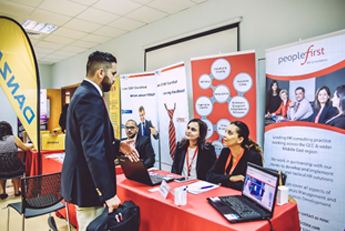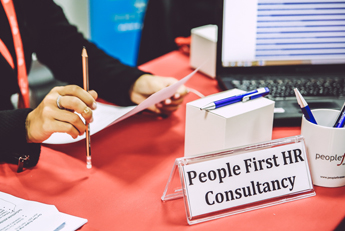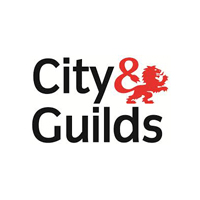PeopleFirst delivered two presentations at Nutshell Forum’s 8th Annual HRM Forum on August 4 & 5, 2010 at the Avari Towers in Karachi, Pakistan. The theme of the HR conference was: Discuss Strategy – Implement Change – Add Value. It was attended by over 150 HR practitioners from across Pakistan with representatives from companies including the State Bank of Pakistan, Google, Siemens, Getz Pharma and Metro Cash n Carry. The topics were firstly, Beyond HR Transformation: Seize New Opportunities through Value Added HR which was presented by Asma Bajawa Managing Director and the second Competencies that HR Should Now Demonstrate by Sarah Davis, Senior Consultant.
Training Evaluation – a waste of time, or is it?
It seems appropriate to celebrate and reflect on the value of training this year, the 50th anniversary of the introduction of Donald Kirkpatrick’s model of training evaluation.
This article explores what evaluation is, why we should evaluate training and the underlying role different stakeholders play and the challenges faced. It concludes with a checklist to share some practical ideas that can be put into place within your organization.
When you google training evaluation, you will receive over 67 million responses which shows the enormity of the knowledge available to us.
This article doesn’t profess to possess all the answers or any secret recipe for success for training evaluation but intends to reinforce and summarise some of the key themes of debate and thinking and share some practical tips.
What is Evaluation?
The evaluation of training is essentially finding out whether the training delivered be it a formal workshop or an informal approach such as coaching was worthwhile or not and was it of value to those individuals involved or the organisation as a whole.
A broader perspective can incorporate learners’ colleagues, managers, senior managers, and the resulting direct or indirect impact on their customers. Those stakeholders identified need to be clear about the purpose of the training and here trainers are reminded of the importance of their role in setting robust and SMART learning objectives for their learners in order to have a benchmark for measures of success and broader metrics in place to evaluate against.
Evaluation has no specific timeframe and will have a different relevance for the different stakeholders; for the learner they may evaluate during the sessions; the trainer may consider the happy sheets and their performance; the manager may make changes in sales; the HR team may later think about attrition rates and its impact on motivation.
Why Evaluate?
The question of why it is so important to evaluate training isn’t difficult to answer in the midst of a financial crisis when there are challenges on people’s time, with fewer people doing more work and budgets cut so the ability to justify costs and the benefits is even more crucial.
In a business climate which has undergone such a fundamental shift in the past 18 months this question almost seems irrelevant with resources – people, time and budgets at a premium. Ultimately has the organisation had a return on its investment in the training intervention or could the investment be better spent on something more worthwhile? However, here as trainers we have to consider at what levels to evaluate which interventions and the depth of our analysis for specific training and who should be involved in the organisation.
For example, do we really want to spend valuable time and resources evaluating an English or IT programme when time could be better spent evaluating the worth of a new Management Development or Leadership programme or delivering another workshop which our internal customers perceive as our role as trainers.
As trainers with integrity, justifying our role and presence is something we expect to at least try and do in some shape or form. Working with clients at the PeopleFirst consultancy wanting to nurture relationships and also provide the best practice consultancy training evaluation is a ‘must’ but that draws us to some of the challenges.
Clients and non HR professionals don’t always realise the importance of post training activities such as evaluation, practicing and applying the new skills and knowledge, further development coaching, conversations with managers, performance management, embedding of learning and changing behaviors.
What methods can we use?
The Mind Gym produced a useful summary table in 2004 outlining all the different models over the past 45 years (View PDF) which is a good starting point for investigating the history and different models.
A personal favourite and probably one of the most popular model referenced by trainers is Kirkpatricks four levels. It gives a clear structure and approach which can be adapted for the specific requirements of the intervention and the data available. The Kirkpatrick model has a fresh look this year and you can find out more from the whitepaper written by Jim Kirkpatrick, PhD and Wendy Kayser Kirkpatrick.
As trainers we must think systematically about learning and training following a cycle of identifying learning needs based upon the business needs, design and development, delivery of an appropriate solution to meet the skills, knowledge or attitude gap and then finally evaluate whether the training has been worthwhile from different perspectives of the organisation and whether a change in behaviour has occurred which impacts on the individual and organisation’s performance.
In my experience, the most difficult of all the elements is evaluation and although it deceptively comes at the end of the cycle it is something we have to consider first if we are to have any useful data at the end of the process.
We are also reliant upon working relationships with our colleagues and internal customers in other areas of the business to provide data, time and effort.. This responsibility particularly falls on supervisors and managers being the nearest in observing whether changes in behaviour have occurred as a result of the training provided.
Our challenges lie in access to and the amount of relevant data in the organisation pre and post the training event and driving learners and managers to collect data when in their view the learning experience may have finished. It’s time consuming to decide what information is going to be useful, may possibly be available, to find it and then put in mechanisms to collect it if they are not already in place. We have to decide where is our time best spent? The struggle is when our stakeholders and clients aren’t themselves interested or see the value – do we continue?
I belive we have to lead these organisations and start to help our clients, take their learning seriously whilst remembering what’s valuable to one organisation, client or individual isn’t necessarily of the same value for the other.
We know our happy sheets are not enough….It’s admirable that we want to focus on data collection and demonstrating worth but a reality check is needed about what is feasible and possible balancing the needs of the business, our time and energy versus truly demonstrating how valuable the training has been to the organisation and those individuals involved and in times of continuous change how change has come about.
In these times I take a pragmatic approach pushing for data, encouraging clients and individuals and trying to take a collaborative approach.
Therefore the education of managers and individuals to understand better the learning process and complexities of learning so that it’s not solely taking place and being measured in the classroom and encouraging them to taking responsibility for their learning and development with a long term approach on the job and keeping ongoing records and sharing stories so that data is captured throughout the learning process.
Conclusion
In conclusion, evaluation isn’t a waste of time however aside to having clarity about the objective of any training event from the outset there also needs to be clarity about if and why the training is being evaluated, the depth of the evaluation and data required with a view to what data is already in place and what needs to be created and who should be involved in the evaluation process.
Our roles and accountability is to drive the evaluation process across the organisation, working with and communicating to all involved at each stage and creating and using tools that are simple yet needing the minimum of resources in time, people and money but with maximum effect to demonstrate the enormous value that we know as trainers we play in driving individuals capability and the overall business performance and its capacity to adapt and change. It’s definitely not an easy role but one which no doubt we will again make more progress in the next 50 years.
Some Tips
Here are a few practical tips using Kirkpatricks four levels to help you get started on training evaluation:
Level 1 Reaction
- Don’t assume that the completed happy sheets will have all the answers. Talk to learners during and after the workshop to find out their reaction to the training.
- Alternate between both anonymous and named happy sheets dependent on the training intervention and what you are trying to achieve and find out from the evaluation process.
- When piloting training give at least 30 minutes at the end of the workshop to discuss the delegates reaction to the training in order to make amendments before going live
Level 2 Learning
- Use formal assessments and fun quizzes to measure if learners have achieved the necessary knowledge, skills and attitudes from the workshop
- Ask participants to rate themselves from 1 to 10 overall or on different areas of knowledge, skills and attitudes at the beginning and then at the end of the learning event.
- Recognize achievements throughout the learning event by congratulating and encouraging and reinforcing learning
Level 3 Behaviour
- Encourage managers to discuss any learning activity before and after the event to ensure everyone’s time away from their job is spent in a valuable way and as much learning as possible takes place
- Collect quantitative or anecdotal feedback from managers and colleagues about how a participants performance has improved and has been impacted by the training intervention
- Educate managers to understand that they have a key role in developing their people and check its on their job descriptions
Level 4 Results
- Use metrics that are already in place in the organisation or try and influence senior managers to create them rather than work in isolation as an HR or training function
- Sounds simple but the organisation and representative stakeholders in the learning event need to be clear about the intended objectives to measure the success
- Ask for help from the finance team who are the experts in the organisation
Please feel free to email info@peoplefirstme.com if you wish to share any thoughts or practical experiences about evaluating training.
An HR policy document provides the necessary framework to effectively manage people in any organisation. HR policies and procedures are an essential part of an organisation and provide formal statements of ‘the rules’ that define how an organisation operates on a day to day basis with respect to its people. A comprehensive HR policy document covers all aspects of an employment life cycle from attraction and recruitment through to exiting and incorporates all contractual and non contractual policies. In addition, a formal HR policy document helps to ensure an organisation is compliant with the applicable legal and mandatory employment regulations.
An HR policy also helps an organisation to:
- Manage all employees in a fair and consistent manner
- Set and manage employee expectations
- Communicate an organisations goals and values
- Ensure policies are aligned to legal requirements and best practice
- Create a collaborative working environment
- Provide know how on how to apply policies across all levels of an organisation
Implementing New Policies and Revising Policies
Updating, revising or implementing new policies can have a huge impact on the culture of an organisation. Polices are sometimes used to drive change and therefore it is important to pay particular attention to the implementation process. Successful implementation is dependent on effective communication.
Key Tips on Policy Implementation
Communication
Communicating HR policies and procedures across all levels of an organisation is fundamental to the effectiveness of its implementation. Policies can be communicated in a number of ways depending on an organisation’s size, operations and its existing communication channels.
It is considered best practice that a copy of the HR policy document is available to all employees. A copy of the HR policy document can be made available through a Company’s intranet or obtained from the manager and/or the HR department.
Some suggestions on how to launch or communicate an HR policy include:
- Workshops and/or brief communication sessions
- Team meetings
- Email, memo, bulletin or notice board
- At the start of employment and/or during employee induction programmes
- Employee handbooks
Role of Managers
It is the role of all managers across the organisation to put written policies and procedures into practice.
Managers are primarily responsible for ensuring the consistent application of policies so that all employees are managed in a fair and consistent manner. It is also important for Managers to support employees in understanding and interpreting policies correctly.
Management of HR Policies
Managing and maintaining HR policies is usually the responsibility of the HR department. Effective management of policies will include ensuring the organisation’s policies are in compliance with legal and mandatory requirements and aligned to best practice. Managing and maintaining policies includes updates or amendments (i.e. changes, deletions or revisions) and resolving any issues arising out of the interpretation of any of the policies.
Supporting forms and templates
It is recommended that an HR policy document is accompanied with supporting forms and templates. These can be used to implement policies and help to ensure end to end processes are followed and that necessary information is documented and/or recorded. It is important that forms and templates are made easily available to all employees and can be manual or automated depending on systems availability.
While leaders and managers play an important role in creating the right work environment, a strained relationship with the person in charge can often lead to workplace conflict, explained Asma Bajawa, managing director of PeopleFirst, a Dubai-based human resources consulting firm.
“An employee who has a healthy relationship with their immediate manager is far more likely to be engaged in their job and prepared to work that little bit harder to make their manager happy,” she said. “If the relationship is strained, then this can lead to demotivation and resentment, which in turn can make an employee difficult to work with and manage.”
To identify and understand the problem, Bajawa recommends the following steps:
1. Be factual. Gather the facts of any incident/issue and write them down so that you can refer to them if necessary.
2. Meet with the employee in a room where there are no interruptions. Remain calm and talk to the employee about the incident/issue.
3. Ask the employee directly what the issue is. Tell the employee what you observe and how that is perceived. Ask the employee if they realise the impact of their behaviour/attitude.
4. Give an opportunity to the employee to respond and actively listen to what they are saying.
5. Be clear and tell the employee what you expect from them. Give the employee positive feedback as they work through their objectives and things improve.
Hire right
For start-ups and SMEs, Bajawa recognizes that hiring and firing can be an expensive process. To avoid recruiting difficult employees, or to prevent difficult personalities developing in the workplace, the HR specialist said it is important to try and get it right first time. Here’s how:
- What are the skills you are looking for in hiring? Try and define “must have” and “nice to have” attributes so that you can shortlist only candidates that have what is necessary. Anyone with “nice to have” aspects will be a bonus.
- Think about how you will assess “must have” and “nice to have” skills.
- Try to define the personal attributes important for the job role and for the team fit.
- Try not to rush recruitment decisions. Conduct reference checks for anyone you want to hire.
- Consider using psychometric tests. The personality profile can help you assess a candidate’s suitability and team fit. These are good indicators of how an employee might behave in various scenarios.
Read the full article by clicking here >>
PeopleFirst Find HR Talent at Middlesex University Dubai
The Dubai based HR Consultancy exhibited at the university career fair in order to recruit potential candidates with post graduate HR degrees.
Dubai, U.A.E. 23 March 2016: PeopleFirst HR Consultancy participated in the annual Middlesex University Career Fair, which took place at the Middlesex University Dubai campus in Knowledge Village on the 22nd of March 2016.
“The Middlesex Career Fair is a fantastic opportunity for us to promote our existing and future job openings and to pre-screen potential candidates. We’ve found that the calibre of students and the quality of the master’s degree in HR here at Middlesex University is one of the best in the UAE.” said Asma Bajawa, Managing Director, PeopleFirst.
The Dubai-based consultancy participated for the 5th time this year, with the intention to recruit Dubai’s top HR talent from the job fair which connects current students pursuing undergraduate and graduate degrees to potential employers.
“This year we’ve seen a number of returning companies and several new employers joining our career fair, which is a clear sign that local and international businesses are pro-actively trying to engage with our graduates. We appreciate the participation of PeopleFirst who don’t just exhibit to promote their job vacancies but guide our students on what HR path would be most suitable for them based on their HR strengths and interests.” Said Alveena Javed, Careers and Employability Services Manager, Middlesex University Dubai Campus.
ABOUT PEOPLEFIRST
PeopleFirst is a Human Resources consulting practice that works in partnership with its clients to develop and implement strategic and tactical HR solutions across all aspects of Human Resources Management and Human Resources Development.
ABOUT MIDDLESEX UNIVERSITY
Middlesex University Dubai is the first overseas campus of the internationally renowned Middlesex University in London. The campus, which opened in January 2005, has over 2,500 students from over 90 nationalities and offers undergraduate and postgraduate programmes in a wide variety of subject areas.
The need to be more strategic and ‘add value’ has engulfed many HR departments across different businesses in the GCC and Middle East. But what does this really mean?
To answer this, we should first consider how value is defined or measured. It’s is not the design of a policy or a specific HR programme or initiative that matters, but what the employees gain which help to drive the business from these interventions that makes it value added. The HR value proposition means that HR practices, HR departments, and HR professionals must produce positive outcomes for businesses and all key stakeholders, which includes employees, managers, customers, and shareholders.
In order to add significant value to an organisation, HR departments and HR professionals must focus on how they can contribute to the execution of the corporate strategy. HR’s role in this endeavour is to build the capability of the organisation so that the strategic vision can be realised. This is not something that can be automated or outsourced and can only be delivered by having an intimate knowledge and understanding of the business, its strategy and its existing capabilities. Ultimately, strategy is delivered by people and because HR is all about people, it is HR’s role to deliver capable, suitably skilled and trained people. In addition HR will add value by ensuring there are robust policies, procedures and practices in place to make these things happen. The role of HR in delivering the bottom line should not be underestimated.
In today’s ever changing and highly competitive world, HR plays a key role in an organisation’s success or failure. Success, depends heavily on how effectively an organisation can attract, motivate, develop and retain its people. In today’s cost conscious environment, this means capitalizing on the organisational collective knowledge, skills and experience and working in tandem with managers to improve effectiveness and efficiency of the organisation.
The importance of attracting and retaining talent is a given, however, nowadays it is not enough for an organisation to attract potential employees and convince them that the company is a good place to work. HR professionals have to aim beyond this by demonstrating that ‘this is a great place to work’. Inspiring and motivating employees is a shared responsibility between leaders, managers and HR, however HR plays a critical role in helping engage employees and build trust and commitment with them. This is done by ensuring that the right HR policies and practices are in place that tie in employees for the long term.
In reality, HR does not always get the opportunity to add value in this way. HR is often seen as nothing more than an administrative function. This may be for a number of reasons. HR doesn’t get a seat at the leadership table, the role of HR is not understood and unfortunately the capability and skill level of some HR professionals. Because HR is seen as an administrative function, it often ends up as a place for people with the wrong skill set and this just adds to the vicious circle of not bring appreciated, not being able to make a difference, not being valued and most importantly not being involved by the business when it matters the most.
In today’s tough business environment, organisations should be looking to HR professionals to lead initiatives that improve workforce performance, productivity, and satisfaction. Organisations that align their HR practices with the most critical business issues will have the greatest impact on business results.
This is a huge shift from where many HR departments are today so the change won’t happen overnight. HR departments and HR professionals need to start look internally to identify the gaps between of where we are today and where we want to be in the future.
PeopleFirst HR Consultancy was set up in 2008 in the middle of the recession by our visionary Managing Director Asma Bajawa who saw an opportunity and started the business with her own capital investment. PeopleFirst is now firmly established as one of the leading HR Consultancies in the region and we have already partnered with and successfully competed against some of the well-known global consultancies including the big four.
A testament to this success is the recent 2016 nomination from one of the UAE’s leading women’s publications – Emirates Woman – who have nominated Asma Bajawa for her outstanding leadership and personal business achievements throughout her 30 year career in the category of VISIONARY. You are invited to vote and recognize Asma and other women nominated for their achievements, nominee wins based on public vote.
VOTE for Asma Bajawa now!
To read the submission click here >>
With many expats priced out of their lifestyles, how do companies entice employees to stay?
By Asma Bajawa Special to GN Focus
The year began with a feeling of economic uncertainty that has already had an impact on the job market. In every sector, companies are tightening their belts; in finance alone, it has been reported that there have been 1,500 jobs losses across the region in recent months. In a region where increments and bonuses are almost seen as a given regardless of performance, companies now have difficult decisions to make. So what does this mean for organisations that want to keep good people but don’t have the resources?
There is no one-sizefits-all answer. The region’s workforce is made up of a diverse range of nationalities and cultures, on top of which is the added complexity of managing different generations that are motivated by different things. This is significant when it comes to developing strategies for employee retention. The decision to stay or go can often boil down to how an employee feels about the organisation. Here are some talent retention strategies that should be embedded into a company’s dayto-day HR practice.
1 Fair pay Paying people fairly can go a long way towards motivating and retaining them. Differentiating salaries by nationality is widely practised across the region, but this can create high levels of disengagement, lack of motivation and segmentation within teams. On a positive note, more organisations now recognise this as a real issue that can’t be ignored. The exception to this is nationalisation, where positive action in the form of additional benefits has proven effective in retaining Emirati talent.
2 Staff-friendly policies HR policies can contribute significantly towards employee retention, especially when budgets are tight. Flexible working options and employee welfare schemes are increasingly important to all staff. In addition, specific retention policies can be very effective. Proven examples are enhancing end-ofservice benefits beyond the minimum legal requirement, rewarding employees with extra leave for longer periods of service, or introducing retention payments for key employees.
3 Flexible benefits Innovative and flexible benefits schemes can help a company attract and retain staff through tailor-made packages suited to their personal circumstances. This approach can be managed within the same cost base and allows employees to pick according to their own situation.
4 Growth and development This issue is not specific to difficult times but is definitely one that a lot of employees — and particularly ounger ones — ask about at the interview stage. Unlike the older generations where job security was the main concern, the young look for their own ROI from the organisation: What do I get in return? Can I learn, develop and grow? Is the work rewarding and will it challenge me? Unfortunately too many organisations still look outside when it comes to recruitment, instead of considering and developing internal talent. By creating growth opportunities for existing employees, an organisation can expect a positive shift in retention.
5 Relationships Perhaps most importantly, the relationship between an employee and their manager can have a profound impact on his or her day-to-day life, not only at work but also at home. If an employee feels their manager is supportive, values their contribution, and supports them when things don’t go so well, they are more likely to stay with an organisation. Regardless of how well you pay an employee, if these human factors are missing, employees are unlikely to commit to the organisation in the long run.
Download the article here>>
The economy depends on businesses to maintain growth which in turn requires a motivated and engaged workforce to drive expansion and success.
Successful businesses understand this which is why they:
- use technology to streamline administrative tasks
- have specific policies and procedures in place to optimise HR practices
- and typically engage at least one senior HR professional and other support staff to maximise people and performance
Smaller businesses are as dependent as large multinational corporations on the talent and motivation of their people to grow and succeed — perhaps even more so. However, small businesses generally do not have the same HR resources at their disposal and it can be a challenge for many companies to access a team of HR professionals or the latest HR technology and resources to drive productivity and efficiencies.
Many businesses find it challenging to justify HR outsourcing services due to budgetary constraints. Investment in HR information systems, professional training resources and programs that are designed to enhance performance and develop employees can prove to be a stumbling block as the ROI may not be instantaneous. As a result, investment in HR is not always regarded with the highest strategic importance but this is where HR outsourcing can add value and how we can help.
Through HR outsourcing, your business can access HR resources and expertise that is tailored to your budget. HR outsourcing services provided by PeopleFirst HR Consultancy will give your business an advantage as our flexible HR solutions enable your business to become more competitive, especially in today’s uncertain economic times.
Our HR outsourcing team would function as a your full-service HR department, offering professional HR guidance and resources that would streamline your HR administration, optimise your HR practices, and maximize people and performance, all from one source. The result? Sustainable business success and a competitive advantage.
Are you ready to streamline your HR administration, optimise HR practices and maximize people and performance? In other words – are you ready to outsource your HR? Contact us today.
UAE’s leading magazines Aquarius spoke to HR experts, including PeopleFirst HR Consultancy Managing Director, Asma Bajawa about the top three things that affect the lives as career women – motivation, work/life balance and gender equality – this is what Asma had to say.

British, MD of HR consultancy People First, and mum to Mohsin, 32, and Safinaz, 29
We recently came across a tongue-in-cheek article by The Cooper Report called ‘Non-threatening Leadership Strategies For Women’. Its ‘advice’ included putting smiley faces in emails to try come across as more friendly, and not being too direct when setting a deadline so as not to come across as too bossy. Although it was satire, it made us realise how many of these things we do daily at work, and yes, it probably is to make people like us more. We asked MD of People First whether women tend to shy away from assertiveness at work in a way that men don’t, and what this means… The gender divide at work
“There’s no denying that the gender equality movement across the GCC still has a long way to go. So the issue isn’t whether women shy away from assertiveness or not, the issue is not having a balanced scale of equality. When men and women both have an equal chance to contribute to the economy, workplace, community and home, they are enhancing an entire society and country. Thankfully, the work culture and professional values in the UAE are changing rapidly; not only are we seeing more women in the workplace, we are seeing more women in senior management roles and as business entrepreneurs. At the Abu Dhabi Securities Exchange, women constitute 43 per cent of its investors, while the city’s businesswomen’s association boasts 14,000 members. In the past 10 years we have seen women taking on government positions with Shaikha Lubna Bint Khalid Bin Sultan Al Qasimi, appointed as Minister for Economy and Planning in November 2004 and subsequently promoted to her current post as Minister of Foreign Trade. Shaikha Lubna holds the distinction of being the first woman to hold a ministerial post in the country and her efforts have led her to be rated within the Forbes magazine’s 100 Most Powerful Women.
“This is all great progress. Research shows that companies with gender equality perform better and this is the key to achieving sustained economic growth.
“Gender equality and gender inclusiveness should be encouraged across the UAE if organisations want to be progressive, fair and benefit from gender diversity. This will take time and requires patience. Changing mindsets which have been shaped and influenced by decades of tradition will take years to change, however development in recent years are showing promising trends in the right direction.
“In my opinion, today’s challenging business environment demands both men and women to perform at their best. Men and women must be able to engage with others in a collaborative manner so that they can work together and focus on what the individual brings rather than what gender he or she is.”
















